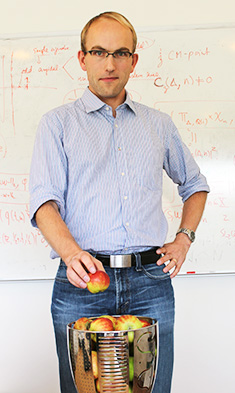2 million DKK for research in number theory
Anders Södergren, a postdoctoral scholar at the Department of Mathematical Sciences, has received 2 million DKK for a two year project "Number Theory and Automorphic Forms in High Dimensions”.

The Danish Council for Independent Research - with support from the Marie Curie Program under EU’s Seventh Framework Programme for Research (FP7) - awards approximately DKK 50 million in MOBILEX grants for 24 young researchers to facilitate more career paths in Danish research and increase the mobility in Danish research environments.
Anders Södergren is working with the research group Geometric Analysis and Mathematical Physics at Department of Mathematical Sciences, University of Copenhagen. He received his PhD in 2010 from Uppsala University, Sweden. From 2011 to 2013 he was a member of the School of Mathematics at the Institute for Advanced Study in Princeton, USA.
Effective packed spheres
Anders Södergren writes in his project description:
"Automorphic forms are a special class of functions that satisfy a number of predetermined symmetries. The theory of automorphic forms is very exciting, in particular because of its close connections with several different mathematical subdisciplines. Mathematical analysis, geometry and algebra are some of the key ingredients in modern studies of these objects. Automorphic forms are also intimately connected to number theory.
One example of a number theoretic problem, which I plan to investigate using automorphic forms, is the following: Which is the most efficient way to pack balls in a high dimensional world?
Many people, not necessarily interested in mathematics, have probably thought about the corresponding problem in three dimensions: Given a large amount of balls or round fruits, what is the densest (most efficient) way to pack them? Even though it is relatively easy to guess what the densest packing should look like, it is very difficult to prove that the proposed packing is indeed as dense as possible. In higher dimensions the problem is even more difficult.
One of the main goals of my project is to try to improve the best known bounds on the optimal sphere packing density in spaces of high dimension."
